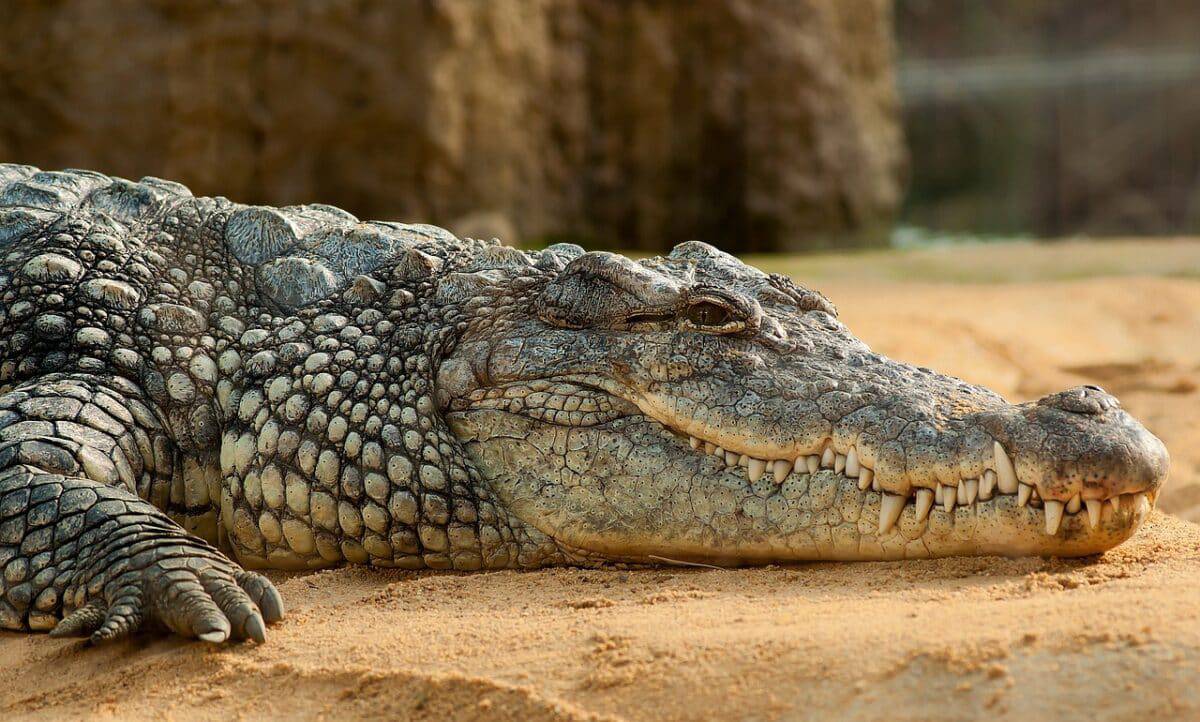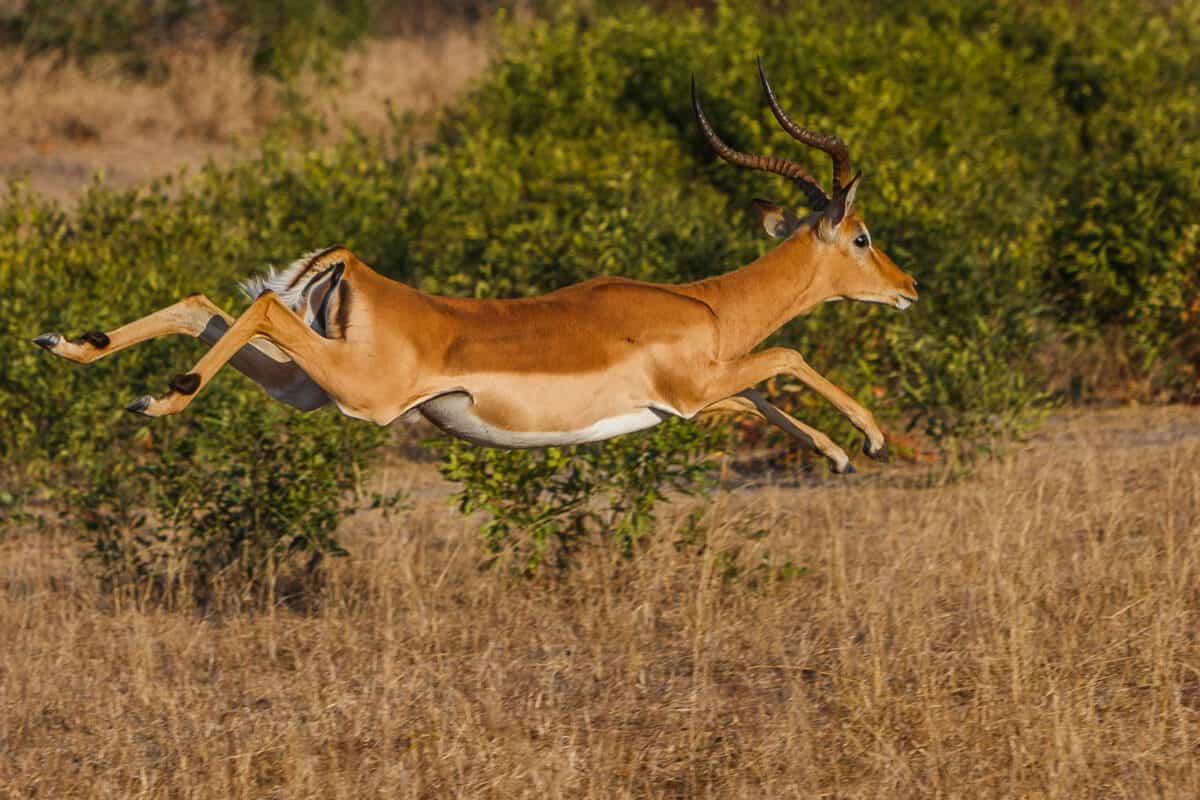It was a sighting beyond your wildest dreams; not only did onlookers witness a hyena hunting an impala, but they also saw an opportunistic leopard attempt to hijack the kill before two crocodiles, the ultimate apex predators, marched towards the wild dogs.
Outnumbered, the leopard stood little chance. Eventually, it was chased away by the hyenas, who were simultaneously dragging the Impala away from nearby crocodiles. The latter caught up and began devouring the prey, while the hyenas, in tug-of-war fashion, attempted to grab any scraps they could.
Along with buck, impalas are hunted by most, if not all, predators, meaning they have a big target on their backs. If you observe their movements without the distraction of other animals, you’ll notice their skittish nature — it’s as if they know a predator could be lurking at any time.

From lions and cheetahs to crocodiles, hyenas, and leopards, they’re hunted by the most ferocious and fastest animals, meaning the life of an impala is an anxious one; they aren’t equipped with sharp claws to counterattack. Instead, they rely on their impressive agility and speed, however, most predators can catch up.
The Characteristics of Impalas

Graceful and nimble, Impalas roam across the savannas and woodlands of eastern and southern Africa, from South Africa to Kenya. Slender in stature, herbivores are characterized by reddish-brown coat, sleek form, and lyre-shaped horns in males.
As mentioned, they possess remarkable agility and speed, capable of leaping distances of up to 33 feet and glide at speeds of around 60-70 kilometers per hour. So, while the predators mentioned above might have them on paper, the act of chasing them down is harder than imagined, thanks to their ability to manoeuvre swiftly through dense vegetation – their main defence mechanism.
Highly sociable, Impalas often roam in large herds, providing them with protection against predators through collective vigilance. It also reduces ones chances of being the unlucky victim.

Despite their gregarious nature, territorial boundaries are often demarcated, particularly during mating season when males compete fiercely for dominance and females.
These resilient creatures are suitably adapted to their surrounding habitats, which are some of the hottest and most unforgiving in the world. Regarding diet, it usually consists of grasses, herbs, shrubs, and leaves to sustain themselves throughout the year. Additionally, impalas play a crucial role in their ecosystems by shaping vegetation through grazing, which can influence the composition and structure of their habitats.

With their conspicuous beauty, remarkable athleticism, and unique social dynamics, impalas captivate the imagination of wildlife enthusiasts and serve as a testament to the hard fought nature of the African plains.
If you enjoyed this, try these:
- Watch: An Impala Tries Jumping Over Lions in a Desperate Attempt to Escape
- Baby Impala Caught by Python Then Eaten by Hyena
- Watch: Crocodile Makes Surprise Attack on Warthog Facing a Pack of Hyenas
Join our Forum for free today!

- Second American Killed by Elephant in Zambia This Year - July 22, 2024
- Elderly Man Kills Grizzly Bear in Montana - July 22, 2024
- Missing Cat Found Weeks Later, 40 Miles Away - July 21, 2024


